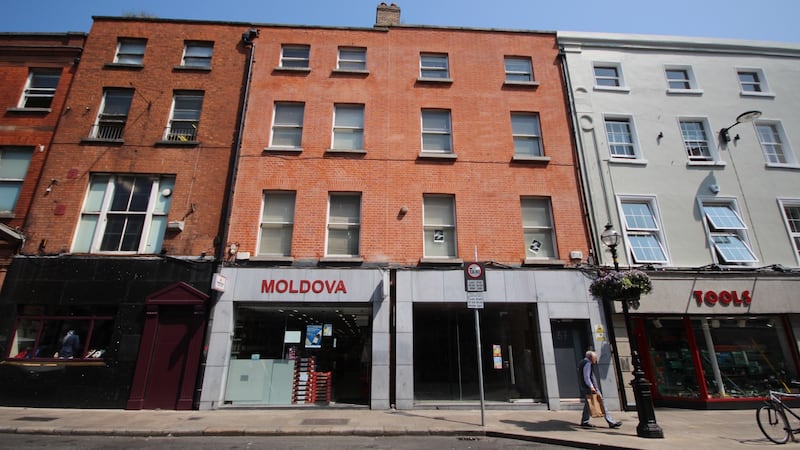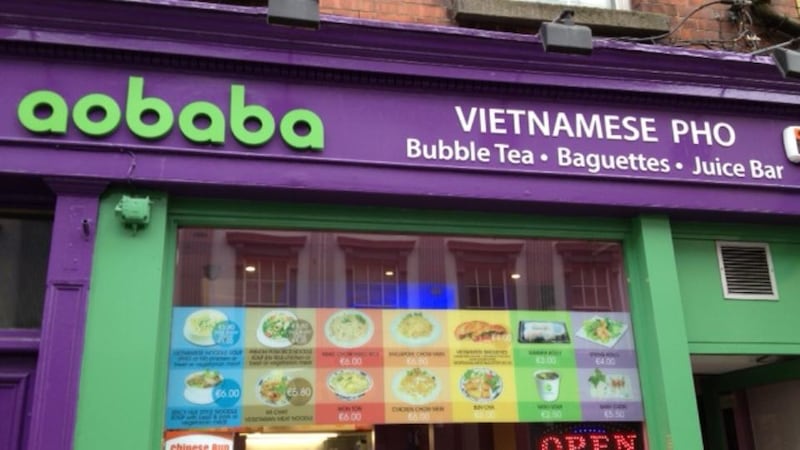Capel Street is everything its “big brother”, O’Connell Street, isn’t – funky, irreverent, gloriously diverse and highly individualistic. It’s the true heart of today’s diversified Dublin.
It never started out that way, indeed when the street was created during the late 17th century, it was filled with fine houses, adorned by gardens to match, together with some Dutch Billy houses, posh homes for posh people.
A century later, Dublin’ s focus moved downriver, with the opening of the Custom House and the Wide Streets Commission decision to create what is now O’Connell Street.
Around that same time, Capel Street was reconstructed with two bay brick buildings, which give the street its present appearance, where no two buildings look the same.
Commerce arrived in the street, in the shape of apothecaries, jewellers and milliners, and during the 19th century, and people coming from continental Europe opened shops in the street. But many of the buildings decayed into tenements.
Capel Street has some excellent pubs, including Jack Nealon's, founded in 1905, with a tremendous interior
The architectural history of the street, as an architectural conservation area, is well documented by Dublin City Council. But the social side of the street is less well preserved.
Capel Street has an amazing collection of very individual retail outlets, selling everything from camping gear to pets, antiques to car accessories and hardware.

One of the oldest shops is undoubtedly McQuillan’s hardware shop, built in 1867, long advertised as having “the finest display of tools in Ireland” .
Just across the street is another renowned hardware shop, Lenehans.
Sex shops and charity shops help create a truly eclectic mix, along with vintage shops, a model shop, a pawnbroker, there since 1850, and a long-established men’s fashion shop, Louis Copeland, but one thing you won’t find there is a branch of a multinationally owned fashion chain or outlets belonging to one of the big supermarket groups, apart from a solitary Centra store. There’s also Ladbrokes, so shiny looking it’s a bit out of place.
I was brought up in a relentlessly middle-class environment; Capel Street is a wonderful escape route from this conformity
In recent decades, multiculturalism has come to Capel Street in a big way. It now has some of the best Asian supermarkets in Dublin, a Brazilian one too, while that same diversity is evident in the restaurant sector. Korean barbecue restaurants, sushi restaurants and noodle establishments are popular and plentiful. Some excellent local eateries, too, are on the Capel Street “must” list, including Camerino, a local bakery and coffee shop, and just a few doors away, Brother Hubbard, cooking simple but interesting food.
Capel Street has some excellent pubs, including Jack Nealon’s, founded in 1905, with a tremendous interior; J McNeill’s, a traditional Dublin pub and traditional music venue; and the Boar’s Head. Slattery’s of course is well recognised for being one of the best live music spots in Dublin, a magnet for tourists.
Numbers 114 to 116 Capel Street demonstrate just how consistent Capel Street has been over the years in reinventing itself. These buildings originally housed the Dublin United Trades Council and the Labour League. In the mid-1930s, these building became the Torch Theatre, for a brief enough period, and then in much more recent times, housed an antiques firm.

Much of the street’s architectural heritage does look decidedly shaky these days, but this ragged raffishness merely adds to the street’s charms.
Strolling along the street, one cannot but be aware of the pulsating energy that comes from all this diversity.
Over the years, a great variety of characters have intensified this feeling, everyone from Peg Woffington, an early-18th-century actor brought up in Capel Street, who found fame on the London stage, to Gerald Davis, art gallery owner and Joyce scholar, who died in 2005.
He turned the family shop, which made rubber stamps, into an art gallery, and one of his many contributions to the gaiety of Capel Street, indeed the city, was appearing as Leopold Bloom come every Bloomsday. In recent years, nothing has symbolised diversity more than Pantibar, an iconic venue for the city’ s LGBTQ+ community, and which hosts the biggest street party of the year, Pride.
The street also has another essential resource for that same community, the Outhouse centre.
I was brought up in a relentlessly middle-class environment; Capel Street is a wonderful escape route from this conformity, which is precisely what you can’t say about O’ Connell Street.









